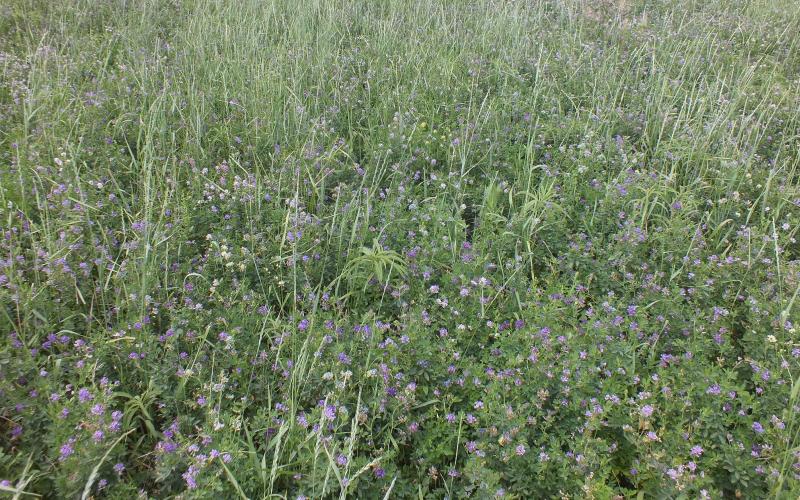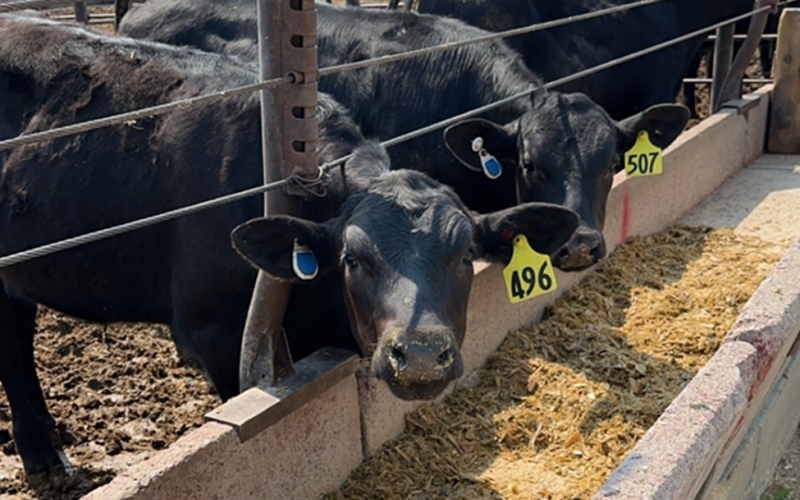Originally written by Tracey Erickson, former SDSU Extension Dairy Field Specialist.
One piece of machinery used daily on many farms, especially dairies and acreages, is a skid-steer. Skid-steers are used for many tasks on the farm such as pushing up feed, handling manure, hauling and loading feed and maneuvering equipment. Owners and employees need to be aware of the correct operating procedures for this equipment and make sure that all who are operating the skid-steer have had adequate training in its operation.
Skid-steers can be dangerous due to their short wheelbase and quick turning ability, as well as having a center of gravity that can easily become off balance causing them to tip. The view entirely around the machine can easily be limited. This requires operators to take special note of objects or people that may not always be in the line of sight when operating. Entrance into and out of the machine can sometimes be difficult and may cause operators to take dangerous shortcuts. Why is this important to call out? We often take for granted that people understand these considerations, but what is obvious to some, may not be so to others and often overlooked.
As agriculture evolves, we continue to employ people with limited machinery experience on our farms. Owners need to take the time to review safe skid-steer operation protocols with employees. The first step (and often the hardest!) is locating and reviewing the operators’ manual for the machine when training employees. Aside of servicing the equipment, it also has guidelines for weight limits given the make and model. Additionally, make sure the skid-steer has the necessary safety decals and that employees understand what they mean.
Owners need to verify employees are capable of operating the machine which should be done by utilizing the Tell, Show, Observe/Evaluate and then Retrain for Procedural Drift method of training, all while incorporating the “Why We Do It This Way Explanation” into the training.
Besides proper decals, the skid-steer must have the proper safety equipment intact. This includes the Rollover Protective Structures (ROPS), side-screens, seatbelts, and operator restraint bars.
Train employees how to get in and out safely using the Three Point Contact Rule. Operators should face the machine, and grab the handholds with both hands when both exiting and entering the machine. Do not mount or dismount a skid-steer while the lift arms or bucket is in the upward position – unless the hydraulic arm cylinders are locked. Turn-off the machine, place controls in neutral, apply any brakes and lower all attachments to the ground before dismounting.
A skid-steer is prone to tipping when the load is unbalanced with the rest of the machine. Do not lift loads more than the weight recommended by the manufacturer. Always carry the load in the bucket close to the ground – this will minimize the downward force of the load. Keep the heaviest part of the skid-steer pointed uphill. Whenever possible avoid driving across steep slopes or too close to steep or soft edges such as manure lagoons. Placing a guardrail or fence near steep drop-offs or deep ponds, such as manure lagoons will help prevent skid-steers and other equipment from accidentally falling into these areas. Keep speed to a minimum especially on rough terrain.
Other Safety Considerations
Other safety considerations when operating the skid-steer are:
- Wear the seat belt provided with the machine when operating.
- Make sure operators understand all machine controls before operation.
- Always stay completely inside the cab when operating, do not operate or attempt to operate the skid-steer levers from outside the protective frame.
- Do not stick your hands or feet out front of the cab.
- Do not stick your fingers through the screen.
- If working on the machine and the bucket or arms need to be up for maintenance make sure to lock the cylinders in place.
- Keep the skid-steer clean and free of mud, ice and manure as much as possible when operating. Clean windows and mirrors often to enhance visibility.
- Do not allow extra riders.
- Do not carry passengers in the bucket.
- Utilize hearing protection when operating.
- Keep all bystanders away while operating a skid-steer. Especially children, as they aren’t easily seen from inside the cab.
- Always look back and around area of operation to make sure no one or any object is in the area of operation.
- Have plenty of ventilation while operating the machine in an enclosed building.
Skid-steers are a handy machine around farms and acreages. Some initial training, safety checks and general safety considerations will reduce the risk of accidents resulting in injury or death.


